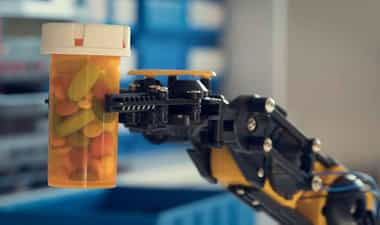
May 7, 2025
Blog Life Sciences 6 Types of Implantable Remote Patient Monitoring (IRPM) Devices
Implantable Remote Patient Monitoring (IRPM) devices are revolutionizing healthcare by continuously monitoring patients' health conditions. These devices are implanted within the body and can transmit critical health data to healthcare providers, enabling timely interventions and better management of chronic diseases. The integration of wireless technology and smart device compatibility has further enhanced the functionality and accessibility of these devices, making them an essential tool in modern healthcare.
According to BCC Research, the global market for implantable remote patient monitoring (IRPM) devices is set to grow impressively, reaching $7.6 billion in 2024 and increasing to $20.3 billion by the end of 2029. This translates to a strong compound annual growth rate (CAGR) of 21.7% from 2024 to 2029.
Let's explore six types of IRPM devices that are making a significant impact:
The global market for implantable remote patient monitoring (IRPM) devices was valued at $6.5 billion in 2023. The market is expected to grow from $7.6 billion in 2024 to $20.3 billion by the end of 2029, at a compound annual growth rate (CAGR) of 21.7% from 2024 to 2029.
Function: ICDs are designed to monitor heart rhythms and deliver electric shocks to restore normal rhythm when an abnormal heartbeat is detected.
Use Case: They are primarily used for patients with arrhythmias, tachycardia, heart failure, and heart disease. These devices play a crucial role in preventing sudden cardiac arrest by correcting life-threatening arrhythmias.
Function: Pacemakers send electrical impulses to the heart to maintain a regular heartbeat, mainly when it detects a slow heart rate.
Use Case: Pacemakers are used for conditions like bradycardia, arrhythmias, cardiomyopathy, and heart failure. They help ensure that the heart beats at a normal rate, improving the overall quality of life for patients with heart rhythm disorders.
Function: CRT devices use multiple leads attached to both ventricles and the right atrium to coordinate the contractions of the heart.
Use Case: CRT devices often improve heart function in patients with severe heart failure symptoms. By synchronizing the heart's contractions, they enhance the efficiency of the heart's pumping action, reducing symptoms and improving patient outcomes.
Function: These devices continuously record the heart's rhythm for up to three years, helping to diagnose the source of irregular heartbeats.
Use Case: Loop recorders are recommended for patients with frequent fainting spells and heart palpitations not detected by short-term monitors. They provide long-term monitoring, capturing intermittent arrhythmias that other devices might miss.
Function: These advanced devices monitor and stimulate the heart by implanting leads into the heart's conduction system, delivering precise electrical impulses.
Use Case: They are particularly beneficial for patients with heart failure, providing more effective heart stimulation. Conduction system pacing offers a more natural way to stimulate the heart, potentially improving outcomes for patients with complex heart conditions.
Function: Neurostimulators are implanted to monitor and modulate nerve activity. They are often used to manage chronic pain or neurological disorders.
Use Case: These devices are used for conditions like chronic pain, epilepsy, and Parkinson's disease, helping to improve quality of life. Neurostimulators can alleviate symptoms and enhance daily functioning for patients with neurological conditions by delivering electrical impulses to specific nerves.
The market for implantable remote patient monitoring devices is growing fast. This is because of new technology, healthcare needs, and government support. As these devices get better and easier to use, they'll help improve patient care and change how healthcare works.
Consider becoming a member of the BCC Research Library and gain access to our full catalog of market research reports in your industry. Not seeing what you are looking for? We offer custom solutions too, including our new product line: Custom Intelligence Services.
Contact us today to find out more.

Kavita Rawat is a Marketing Operations Executive at BCC Research, with a master’s degree in business. She specializes in optimizing marketing strategies and content creation. With her MBA, she combines her passion for marketing with her academic prowess to drive success in the ever-evolving field.
In today’s fast-paced biomedical world, researchers and pharmaceutical companies...

Radiopharmaceuticals represent a cutting-edge frontier in modern medicine, offer...

Single-cell analysis is revolutionizing our understanding of cellular diversity ...

We are your trusted research partner, providing actionable insights and custom consulting across life sciences, advanced materials, and technology. Allow BCC Research to nurture your smartest business decisions today, tomorrow, and beyond.
Contact UsBCC Research provides objective, unbiased measurement and assessment of market opportunities with detailed market research reports. Our experienced industry analysts assess growth opportunities, market sizing, technologies, applications, supply chains and companies with the singular goal of helping you make informed business decisions, free of noise and hype.